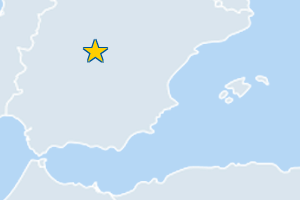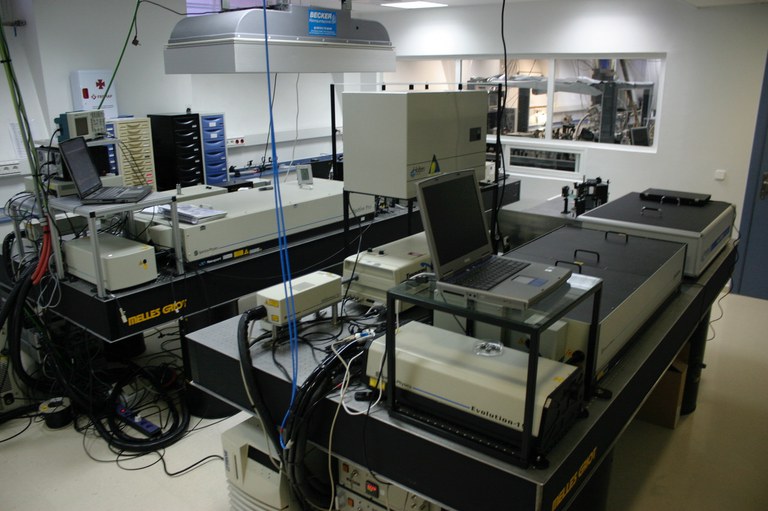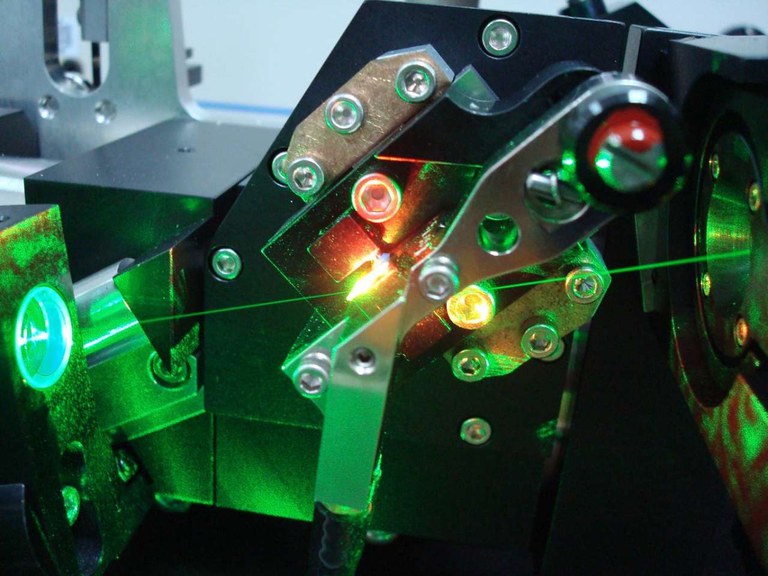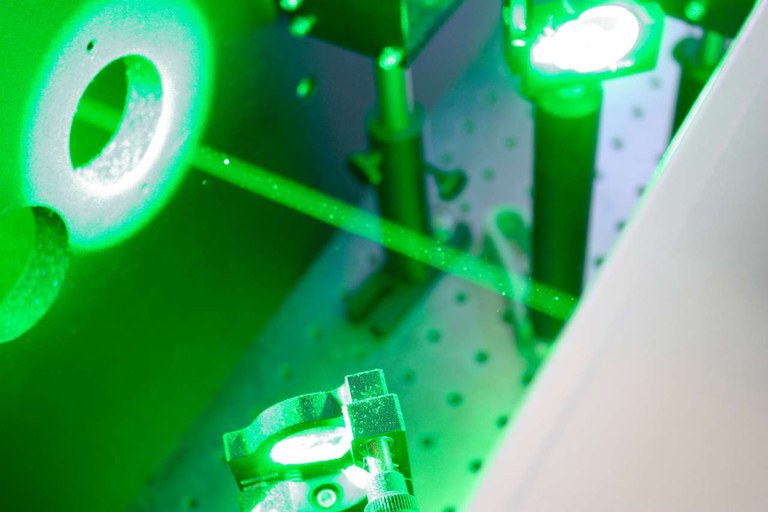CLUR (Madrid, Spain)
Research highlights
CLUR
The Center for Ultrafast Lasers (CLUR),
Universidad Complutense de Madrid (UCM), Spain

Luis Bañares, director, lbanares@ucm.es
Jesús González Izquierdo, technical manager,
jegonzal@ucm.es
Molecular photochemistry, photodissociation and photoionization by velocity map ion and photoelectron imaging and nanosecond and femtosecond laser pulses
Studies of molecular photodissociation dynamics and strong-laser-field control [Sci. Rep., 10, 6700 (2020). DOI: 10.1038/s41598-020-62982-0]
Femtosecond and nanosecond laser processing of materials
Nanosecond and femtosecond laser irradiation of nanoparticles for nanoshaping, nanoalloying, cut and paste in the nanoscale, formation of hollow nanocrystals [Adv. Opt. Mat., 9, 2002134 (2021). DOI:10.1002/adom.202002134]
Laser ablation, laser desorption/ionization and pulsed laser deposition of solids in combination with time-of-flight mass spectrometry
Femtosecond laser ablation and deposition of thin films of nanomaterials [Nanomaterials, 10, 2229 (2020). DOI: 10.3390/nano10112229]
Photoluminescence of solid and liquid samples and femtosecond time-resolved fluorescence
Femtosecond time-resolved fluorescence up conversion [J. Colloid Interf. Sci., 575, 119 (2020). DOI: 10.1016/j.jcis.2020.04.076]
Sensitivity maps for electronic devices by low-energy femtosecond laser irradiation
Single event transients in bipolar analog integrated circuits [IEEE Trans. Nucl. Sci., 62, 1625 (2015). DOI: 10.1109/TNS.2015.2416000]
Development of instrumentation, automation, and measurement software
Multidimensional analysis of time-resolved charged particle imaging experiments [App. Sci., 8, 1227 (2018). DOI: 10.3390/app8081227]
Expertise
The availability of ultrafast lasers at CLUR has changed completely the kind of experiments and assays that are now possible. Using these laser technologies, it is now possible to offer access to laser services for research at the frontier of Chemistry, Physics, Biomedicine and Material Science in research fields involving ultrafast lasers to investigate phenomena at the temporal scale where they happen (Femtochemistry, Femtophysics, Femtobiology). Only with such an ultrashort time resolution it is possible to understand molecular change at the time scale where molecular processes occur, such as bond breaking and forming, molecular degrees of freedom (vibration and rotation) or energy transfer, proton transfer and electron transfer processes of interest in Chemistry and Biology.



The availability of ultraintense laser pulses makes it possible to study matter under strong electromagnetic fields where the processes of interest at a molecular level are dissociative ionization, Coulomb explosion, and high order harmonic generation. In addition, the use of ultrafast laser pulses allows to have a photonic tool of high capabilities for materials microfabrication and nanostructured materials and thin film synthesis and modification. The possibility of pulse shaping is also relevant for the field of quantum control of physical and chemical processes and material science.
CLUR offers the possibility of custom-made experiments and assays. The different nanosecond and femtosecond lasers available in combination with the additional instrumentation in the lab (molecular beams, time-of-flight mass spectrometry, ion and photoelectron imaging, time-resolved fluorescence, optics and optomechanics) and the availability of dedicated experts at CLUR allow for custom requested experimental setups and assays involving laser pulses. This way, CLUR is a unique laser installation offering access to researchers from many different areas of research in research projects involving instrumental developments.
Services for industry
Spectroscopy consulting
Operation and maintenance of specific spectrophotometric equipment
Technical support on new instrumental developments involving laser and vacuum equipment
Development of optics, electronics, and charge particle detection systems
For more information, contact the Laserlab Office.
Search for other industry services>>
Equipment offered to external users
CLUR infrastructure consists of two laboratories 100 m2 each hosting two femtosecond laser systems (3.5 mJ, 35 fs, 1 kHz) including pulse diagnostics, three optical parametric amplifiers (OPA), second, third and fourth harmonic generation units and all the necessary optics and opto-mechanical components, including several delay lines, to perform pump-probe experiments. Commissioning of a high-power carrier-envelope-phase (CEP) stabilized femtosecond laser system (5 mJ, 25 fs, 1 kHz) including compression to few-cycle pulses (3.7 mJ, 5 fs, 1 kHz) is underway. The femtosecond infrastructure includes a fluorescence up-conversion instrument for time-resolved fluorescence measurements in condensed phases and home-made micromachining and pulsed laser deposition devices. At this moment, a high harmonic generation (HHG) line to produce XUV attosecond pulsed radiation is under construction.
CLUR hosts three nanosecond laser systems consisting in three dye lasers pumped by three high-power Nd:YAG lasers. The infrastructure also includes up to four additional Nd:YAG lasers with harmonic generation up to the fourth harmonics, an optical parametric oscillator (OPO) and nanosecond pulsed tunable Ti:Sa laser.
Three molecular-beam machines with time-of-flight mass spectrometers and ion and photoelectron imaging detectors are available at CLUR.
CLUR laser service provides access to research groups and research projects, including several technological companies. The infrastructure is driven by the director and by two full-time technicians. In addition, several undergraduate students, PhD students and postdocs belonging to different research groups are continuously performing experiments at CLUR

